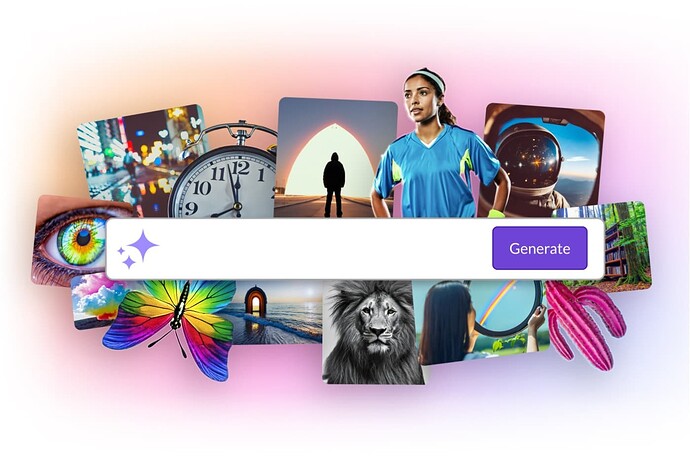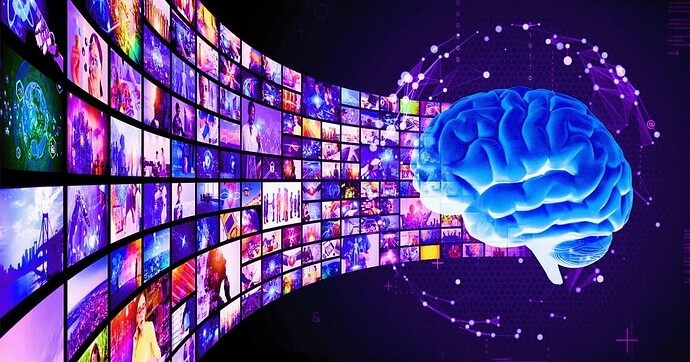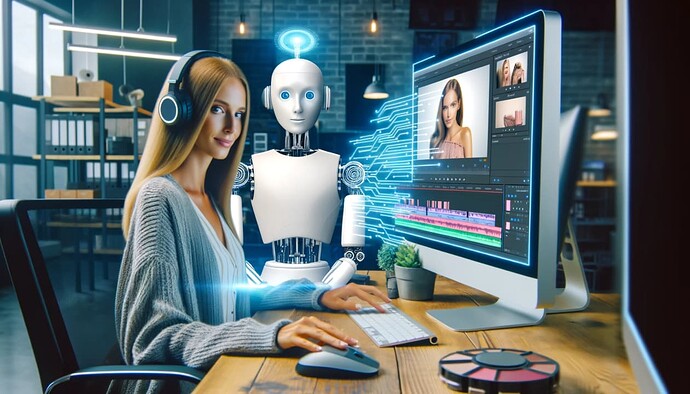The advent of artificial intelligence (AI) has transformed various fields, including art, design, and photography. One of the most exciting applications of AI is its ability to create images of people based on existing photos. This capability has implications for industries ranging from entertainment to marketing and even science. This article delves into the technologies and methodologies behind AI image generation, the implications of such technologies, and their future potential.
1. AI Image Generation
1.1 What is AI Image Generation?
AI image generation refers to the process of using algorithms, particularly those based on machine learning and neural networks, to create visual content. These algorithms analyze input data—such as photographs—to generate new images that can resemble, transform, or combine elements of the original input.
1.2 How Does AI Generate Images?
AI image generation typically involves deep learning models, especially Generative Adversarial Networks (GANs) and Variational Autoencoders (VAEs). Here’s how they work:
- Generative Adversarial Networks (GANs): A GAN consists of two neural networks—the generator and the discriminator. The generator creates images, while the discriminator evaluates their authenticity. Through iterative training, the generator learns to produce images that become increasingly realistic, fooling the discriminator.
- Variational Autoencoders (VAEs): VAEs encode input images into a compressed representation and then decode them back into images. By manipulating the latent space, users can generate new images or modify existing ones.
1.3 Key Components in Image Creation
- Training Data: The quality and diversity of the training data significantly impact the AI’s ability to generate realistic images. Large datasets containing various images of people help the model learn diverse features.
- Preprocessing: Before training, images are often preprocessed to ensure uniformity in size, color, and other attributes. This step is crucial for effective learning.
- Fine-Tuning: After initial training, models may undergo fine-tuning to specialize in specific types of images, such as portraits or artistic representations.
2. Notable AI Technologies for Creating Images of People
Several AI technologies and tools have emerged that excel at generating images based on photos. Here are some of the most prominent:
2.1 DeepArt
Overview: DeepArt uses deep learning algorithms to transform photos into artwork. By applying the styles of famous artists to user-uploaded images, it creates unique, artistic representations.
How It Works: Users can upload a photo and select an art style. The AI analyzes the input image and applies the chosen style, resulting in a new piece of art that retains the original’s content while adopting the selected aesthetic.
2.2 StyleGAN
Overview: StyleGAN is a type of GAN developed by NVIDIA that can generate highly realistic images, including human faces. It has gained attention for its ability to create photorealistic images from latent vector inputs.
How It Works: StyleGAN allows users to manipulate various aspects of generated images, such as facial features, hair, and background. By adjusting the latent vectors, users can create diverse images based on specific traits.
2.3 DALL-E
Overview: DALL-E, created by OpenAI, is an AI model capable of generating images from textual descriptions. While it primarily focuses on generating images from text, it can also create variations of existing images.
How It Works: Users can input a descriptive prompt, and DALL-E generates corresponding images. It can modify existing images based on additional textual input, allowing for creative exploration.
2.4 Runway ML
Overview: Runway ML offers a suite of AI tools for creatives, including image generation capabilities. It provides access to various machine learning models that can transform and generate images.
How It Works: Users can leverage pre-trained models to manipulate images or generate new content based on uploaded photos. The platform’s user-friendly interface makes it accessible to non-experts.
2.5 Artbreeder
Overview: Artbreeder is a platform that allows users to blend images and create new artwork collaboratively. It enables the generation of unique images from existing ones through a process of mixing and evolving.
How It Works: Users can upload images and adjust parameters to create variations. The platform uses GANs to facilitate the blending process, allowing for the exploration of diverse artistic styles.
3. Applications of AI Image Generation
The ability to generate images of people based on photos has numerous applications across various industries:
3.1 Entertainment and Media
In the entertainment industry, AI-generated images can be used for character design, concept art, and visual effects. Filmmakers and game developers can create realistic character representations without the need for extensive manual artistry.
3.2 Marketing and Advertising
Marketers can utilize AI-generated images to create personalized advertisements and promotional materials. By generating images that resonate with target audiences, brands can enhance their marketing strategies.
3.3 Fashion and Design
In the fashion industry, designers can generate virtual models wearing their creations. This approach allows for cost-effective marketing and reduces the need for physical photoshoots.
3.4 Healthcare and Research
AI-generated images have potential applications in healthcare, particularly in areas like facial recognition for identifying conditions or diseases. Researchers can generate diverse datasets for training diagnostic models.
3.5 Art and Creative Expression
Artists can use AI tools to explore new styles and concepts, pushing the boundaries of traditional art forms. By collaborating with AI, artists can create unique pieces that blend human creativity with machine learning.
4. Ethical Considerations
The rise of AI image generation raises important ethical considerations that must be addressed:
4.1 Consent and Privacy
When generating images based on existing photos, issues of consent and privacy come into play. Using someone’s likeness without permission can lead to legal and ethical dilemmas.
4.2 Misuse and Manipulation
AI-generated images can be manipulated to create misleading or harmful content. Deepfakes, for instance, use similar technologies to create realistic but false representations of individuals, raising concerns about misinformation.
4.3 Authenticity and Attribution
As AI-generated content becomes more prevalent, questions of authenticity arise. Who owns the rights to an AI-generated image? Should AI-generated works be attributed to the AI or the user?
4.4 Impact on Employment
The automation of creative processes through AI may impact jobs in fields such as photography, illustration, and design. While AI can enhance productivity, it may also lead to job displacement in certain sectors.
5. The Future of AI Image Generation
5.1 Technological Advancements
As AI technology continues to evolve, we can expect improvements in image quality, realism, and customization. Future models may be able to generate even more nuanced and diverse images based on user inputs.
5.2 Integration with Augmented and Virtual Reality
The integration of AI image generation with augmented reality (AR) and virtual reality (VR) technologies has the potential to create immersive experiences. Users could interact with AI-generated characters or environments in real-time.
5.3 Enhanced Personalization
With advancements in natural language processing and user profiling, AI-generated images could become more personalized. Users may receive images tailored to their preferences, enhancing engagement and satisfaction.
5.4 Ethical Frameworks
As AI-generated content becomes more mainstream, the development of ethical frameworks and guidelines will be crucial. Stakeholders, including technologists, artists, and policymakers, must collaborate to address ethical implications.
6. Conclusion
AI technologies capable of creating images of people based on photos represent a significant advancement in creative capabilities. From entertainment to marketing, the applications of AI-generated images are vast and varied. However, as with any emerging technology, ethical considerations must be at the forefront of discussions surrounding its use. By navigating these challenges thoughtfully, we can harness the power of AI to enhance creativity while respecting individual rights and promoting responsible practices.
The future of AI image generation holds immense potential, offering exciting opportunities for innovation and artistic expression. As technology continues to evolve, the partnership between human creativity and AI will likely redefine the landscape of visual art and design, paving the way for new forms of expression and engagement.


